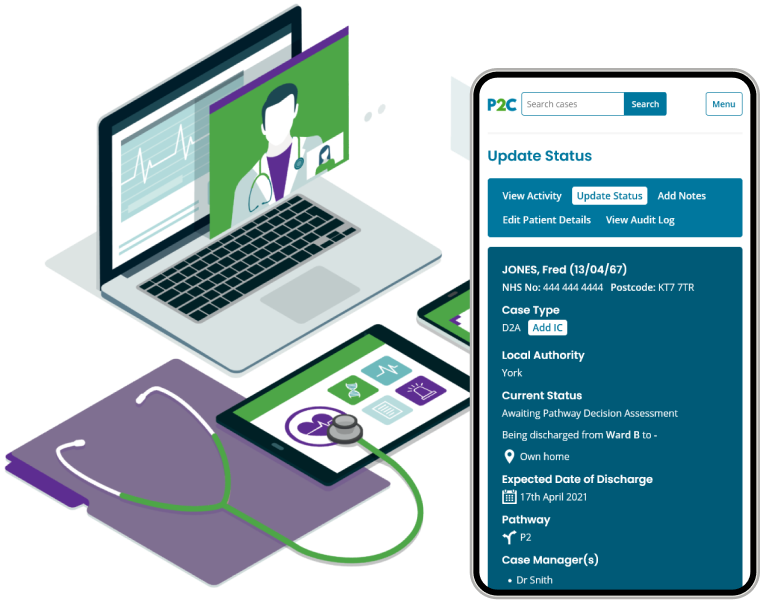
Standardising the hospital discharge process
What I did
- Interface design
- User research
- Front-end development
- Wireframes
- User journeys
- Prototyping
- Accessibility
- Content
- QA
- £400K
- saved by North Lincolnshire Council
- 100%
- patient processing consistency
During Covid-19 it became apparent that an inconsistent hospital discharge process resulted in unsatisfactory patient care. This is the story of how Maldaba and CC2i collaborated with four NHS Trusts to deliver a system to improve and standardise that process.
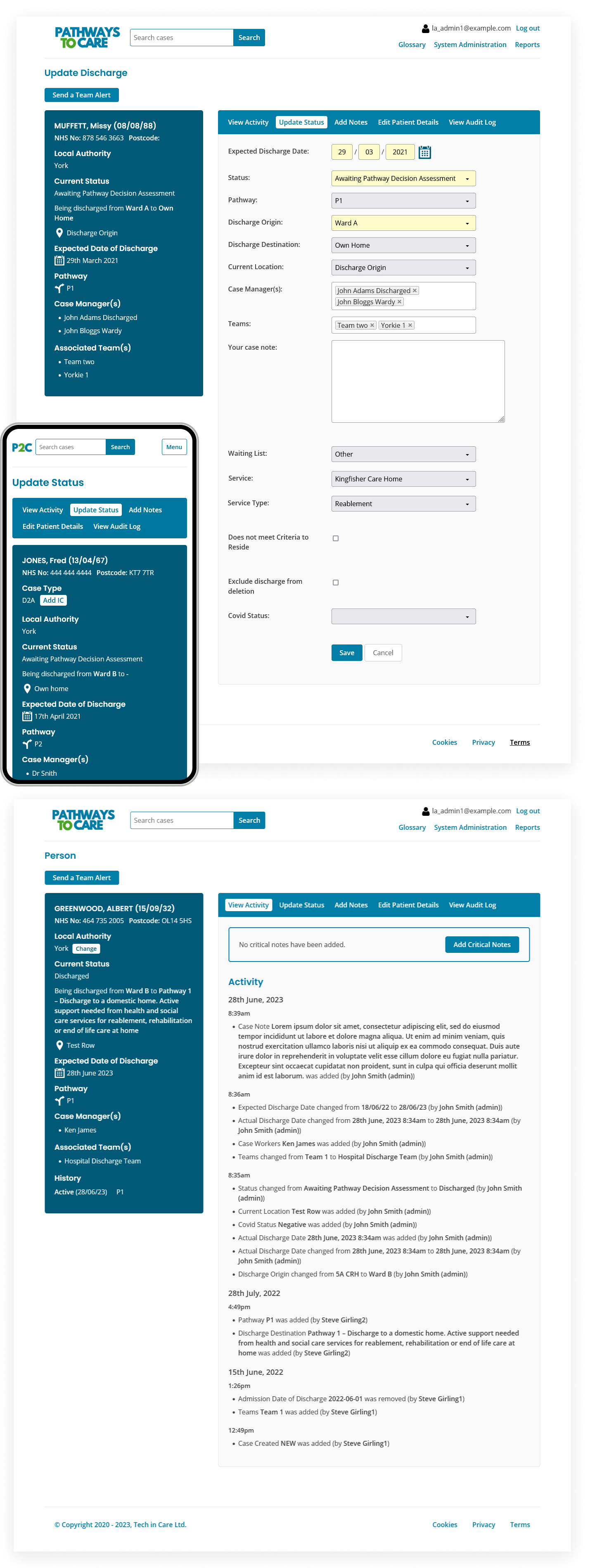
Discharge 2 Assess (D2A)
D2A presents an information-sharing challenge for Local Authorities and NHS Trusts, to ensure the safe, efficient discharge from hospital of vulnerable people, when they’re medically well enough to leave hospital. The process requires a multi-agency approach involving hospitals (ward staff, doctors, discharge teams, pharmacy services), CCGs, adult social care teams, local authorities, transport providers, domiciliary care providers and others.
A collaboratively created system meant key stakeholders shaped the systems design. This approach continues to drive adoption and enhancements added post launch.
Results
Patients are processed in the system according to agreed standards
Extensive data logic added with agreed precautions added to ensure patients are not lost
Local Authority and NHS staff have a transparent single source of truth for D2A patients offering impressive net annual savings.
North Lincolnshire Council - Administrative savings £72k, Efficiency savings £85k, Bed capacity savings £250k
The full story
The updated D2A model introduced in March 2020 aimed to streamline hospital discharges in light of Covid-19. Teams across the country have been using spreadsheets, email and the telephone to exchange information on a daily (sometimes hourly) basis.
The need to solve the D2A challenge and provide a cloud service, supplier agnostic, that would securely digitise this information sharing formed part of the NHS Digital 2020 Social Care Digital Innovation Accelerator (SCDIA) program. The SCDIA focusses on solving problems experienced by Local Authorities, community and primary care, and to develop real working solutions that can be scaled across local government and the wider public sector.
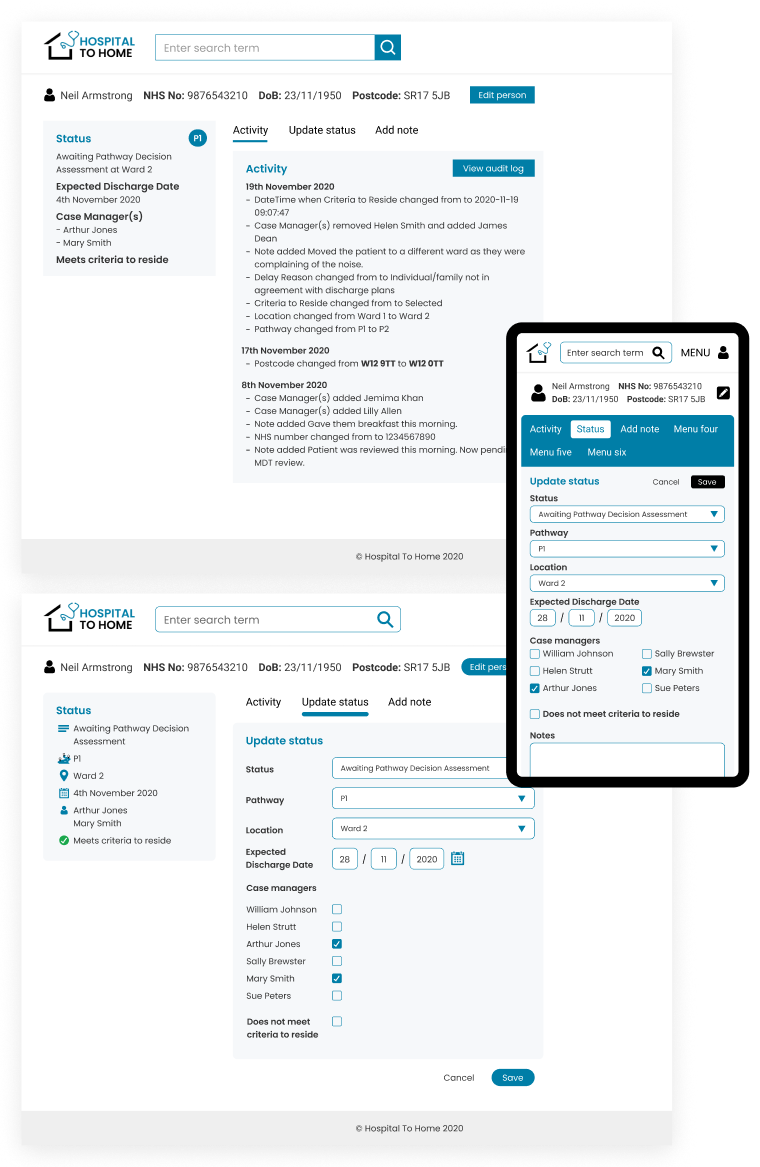
Initial process
Following an open competition, Maldaba was chosen by CC2i (the platform that runs the SCDIA) and the Local Government Association (LGA) as the technical partner to co-produce a solution. Maldaba worked with five Local Authorities and their delivery partners across health, care and transport to co-design and deliver Pathways To Care (P2C), holding online workshops attended by up to 70 staff.

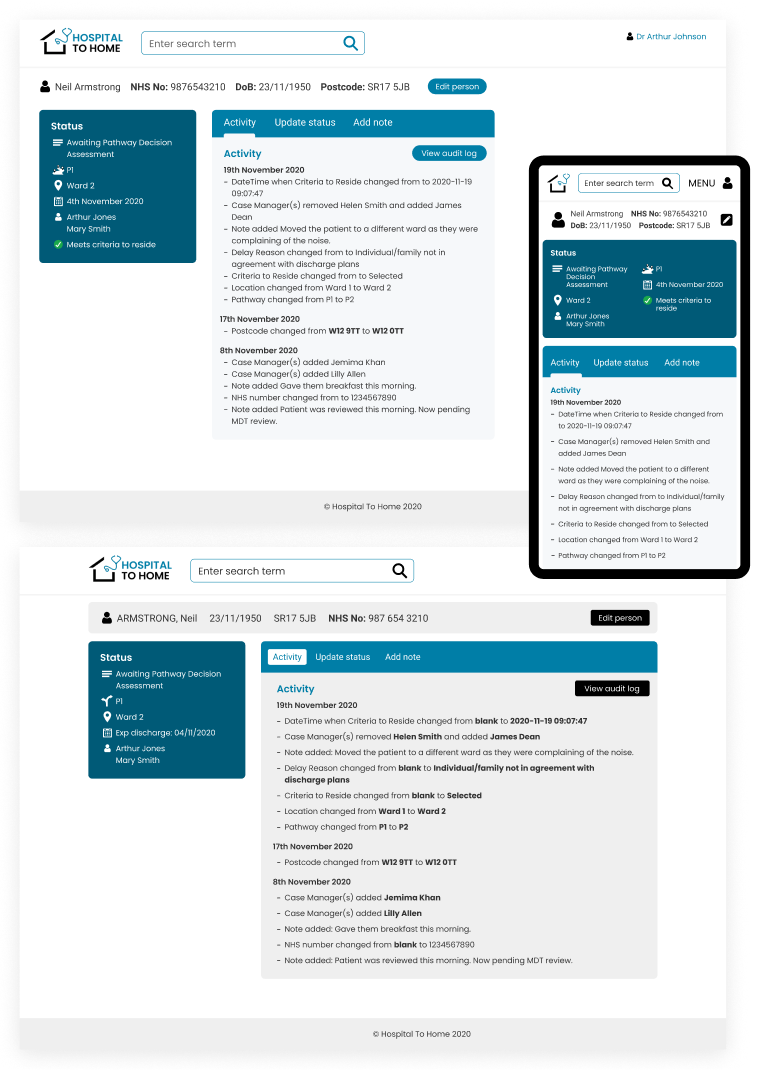
Core features
P2C offers case management, tracking and reporting features, allowing users from multiple organisations to create, update and monitor D2A cases across multiple pathways on an open, human driven platform. P2C supports the D2A process from the point at which a person is identified on the ward as requiring support on discharge, through to the point that the person receives an assessment on their longer term needs within a community setting.

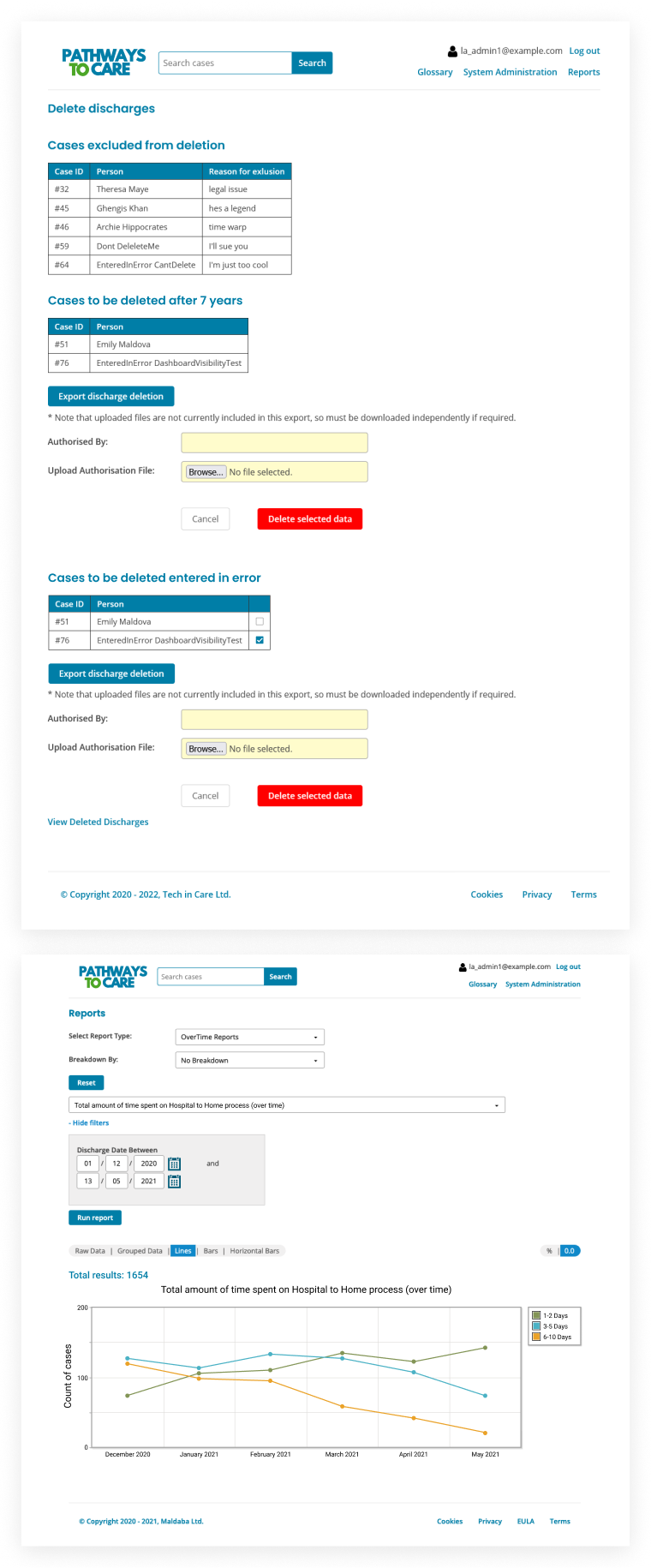
View the project at https://tech-in-care.uk/pathways-to-care/
